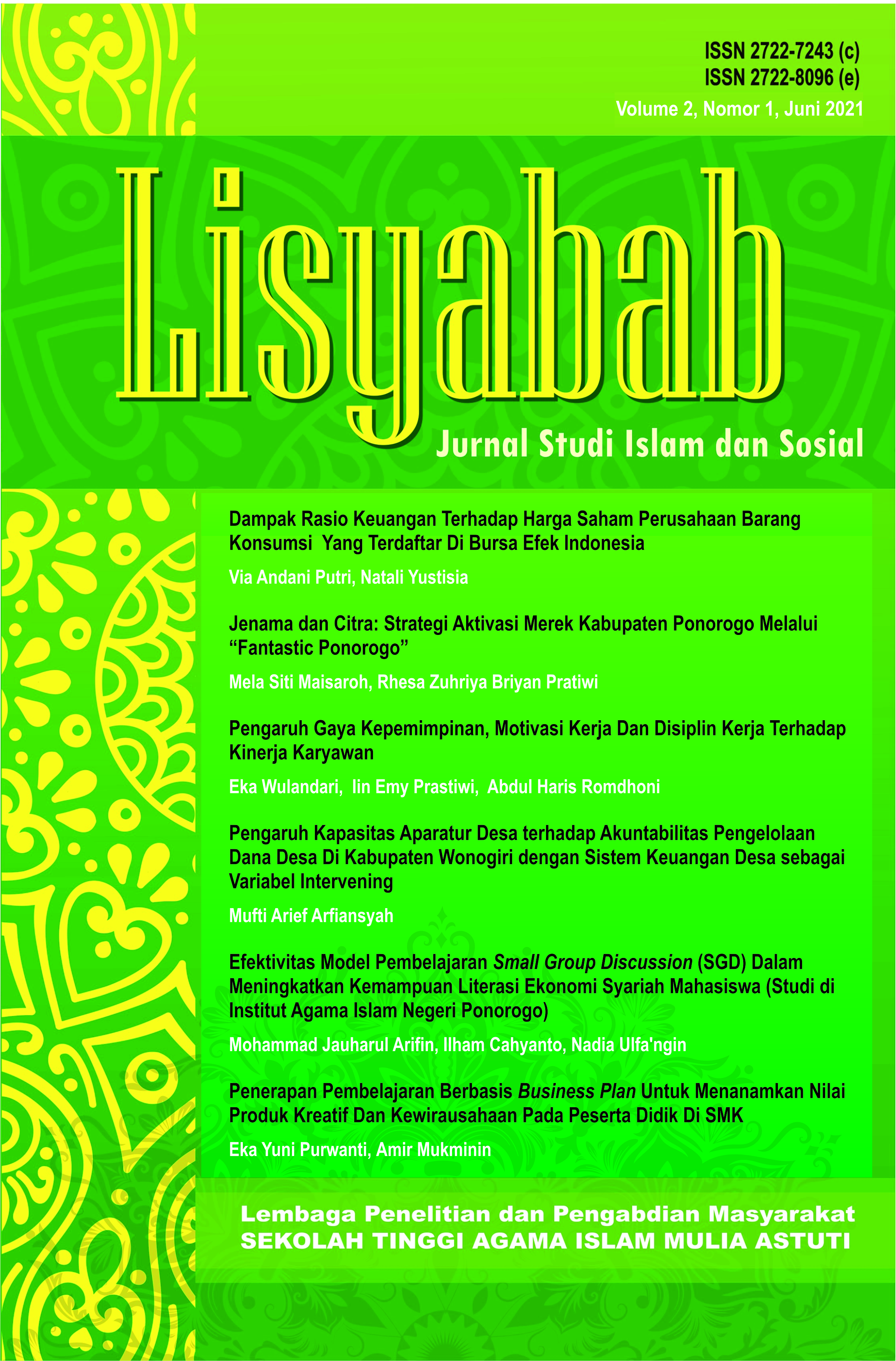Skala Prioritas Penentuan Mustahiq Zakat Di Lembaga Amil Zakat (LAZ) Ummat Sejahtera Ponorogo
Abstract
Zakat is a basic form of worship which is one of the pillars of Islam , has a very important position both from the point of view of Islam ic teachings and from the side of developing the welfare of the people. Zakat is also one of the main components in the Islam ic economic system. In distributing zakat after it has been collected, it is given to people who are entitled to receive zakat (mustahiq) which is mentioned in QS at-Taubah: 60, namely poor, poor, amil, converts, gharim, riqab, fisabiillah and ibnu sabil. The distribution of zakat to 8 asnaf will bring maslahah. In determining who is entitled to receive zakat, there are criteria for each mustahiq.
This research is a type of field research research (field research). Collecting data using interview and documentation techniques. Then the data were analyzed using the deductive method. The result of this research is LAZ distributes it to be distributed to the mustahiq. This institution focuses on the poor on the grounds that it prioritizes the priority scale where for the Ponorogo area the majority and deserves to be assisted are that group, that the zakat giving does not have to be to 8 asnaf if they are not completely in one area, and if it is seen as more realizing benefit by only to the poor / prioritizing priority scale. For those who fall into the poor category LAZ Ummat Sejahtera makes a scale in which there are points for categorizing candidates for mustahiq, such as the income of the head of the family, occupation, condition of the house, vehicle, etc. In each category there are points. After the total points have been collected, it is determined whether or not they are worthy of assistance. For those who are in the poor category, LAZ Ummat Sejahtera makes a scale in which there are points for categorizing mustahiq candidates, such as the income of the head of the family, occupation, condition of the house, vehicle, etc. There are points in each category. After the total points are collected, it is determined whether it is worth helping or not. The scale is for a total of 126-165 points in the category requiring special attention, 76-125: worthy of assistance and 33-75: not worthy of assistance, so, to determine whether a mustahiq candidate can be assisted or not, LAZ Ummat Sejahtera already has a benchmark like that above. The share of each mustahiq in LAZ Ummat Sejahtera is according to their needs so it does not have to be 1/8 (one-eighth). Amyl part according to QS. At-taubah: 60, still gets a share of 1/8 as wages for his function in collecting and distributing zakat funds to mustahiq. At LAZ Ummat Sejahtera usually the amil portion goes into the LAZ reserve fund which is used for LAZ operations or to be distributed back to mustahiq someday.
Downloads
References
al-Zuhaily, Wahbah. 2005. Zakat Kajian Berbagai Madzab. Bandung: Remaja Rosdakarya.
Anonimus. 1997. Pedoman Manajemen Zakat. Jakarta: BAZISKAF PT TELKOM.
Basrowi, Suwandi. 2008. Memahami Penelitian Kualitatif. Jakarta: Rineka Cipta.
El-Madani. 2013. Fiqih Zakat Lengkap. Jogjakarta: Diva Press.
Hasan, Ali, M. 2006. Zakat dan Infak. Jakarta: Kencana.
Hidayatulloh. Dkk, Agus. 2012. Al-Thayyib Al-Qur’an Transliterasi Per Kata dan Terjemah Per Kata. Bekasi: Cipta Bagus Segara
Huda, Nurul. 2012. Keuangan Publik Islam . Jakarta: Kencana.
Jamil,.Syahril. 2015....Prioritas mustahiq zakat menurut teungku muhammad hasbi ash shiddieqy,.(Jurnal.Istinbath, No.16/Th.XIV/Juni/2015/145-159).
Margono, S. 1997. Metodologi Penelitian Pendidikan. Jakarta: Rineka Cipta.
Moeloeng, Lexy. 2006. Metodologi Penelitian Kualitatif . Bandung: PT. Remaja Rosdakarya.
Qarhawi, Yusuf. 1997. Kiat Sukses Mengelola Zakat. Jakarta: Media Dakwah.
Saebani, Beni Ahmad Saebani. 2009. Metodologi Penelitian Hukum. Bandung: CV Pustaka Setia.
W, Tri Eka, dkk. 2017. Pembagian Zakat Fitrah kepada Mustahiq: Studi Komparatif Ketentuan Ashnaf menurut Imam Syafi’i dan Imam Malik, (Jurnal muqtasid, 8 (2) 2017:154-167).
Copyright (c) 2021 LPPM STAIMAS Wonogiri

This work is licensed under a Creative Commons Attribution-NonCommercial-ShareAlike 4.0 International License.
Penulis yang menerbitkan jurnal ini menyetujui persyaratan berikut:
- Penulis memiliki hak cipta dan memberikan hak jurnal untuk publikasi pertama dengan karya yang secara simultan dilisensikan di bawah Lisensi Atribusi Creative Commons yang memungkinkan orang lain untuk berbagi karya dengan pengakuan kepengarangan karya dan publikasi awal dalam jurnal ini.
- Penulis dapat mengadakan perjanjian kontrak tambahan yang terpisah untuk distribusi non-eksklusif versi jurnal yang diterbitkan dari karya tersebut (misalnya, mempostingnya ke repositori institusional atau menerbitkannya dalam sebuah buku), dengan pengakuan atas publikasi awalnya di jurnal ini.
- Penulis diizinkan dan didorong untuk memposting pekerjaan mereka secara online (mis., Dalam repositori institusional atau di situs web mereka) sebelum dan selama proses pengiriman, karena dapat menyebabkan pertukaran yang produktif, serta kutipan yang lebih awal dan lebih besar dari karya yang diterbitkan.








2.png)





